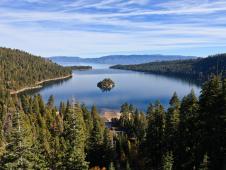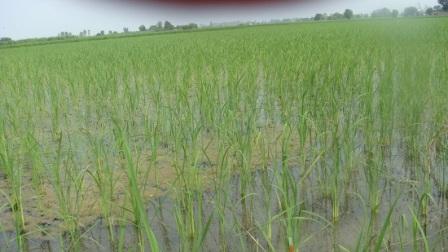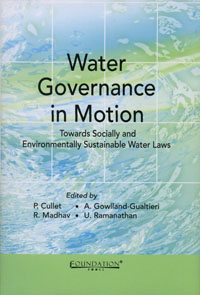Rainfall and other forms of Precipitation
Embankments related compensation to drain Indian exchequer : Need to review the flood control policy of the Government
Posted on 16 Dec, 2010 03:14 PMGovernment of Nepal has asked the Government of India to compensate its citizens badly affected by embankments and other flood control measures taken on river Gandak. Will this not lead to a flood of demands for compensation by the victims of similar problems in other river basins like the Bagmati, the Kamala and the Kosi?
Drought 2009: Overview and management – A report by the Ministry of Agriculture
Posted on 16 Dec, 2010 09:39 AMThis document on the management of drought during 2009 published by the Department of Agriculture and Cooperation of the Ministry of Agriculture presents the deficiency and erratic behavior of rainfall, impact of drought, mitigation efforts initiated and their results. During the deficient and erratic rainfall of South-West monsoon 2009, fourteen States declared drought/ drought like situation/ scarcity in 338 districts of the country.
Floods, Rainfall - News Roundup (23rd November to 7th December 2010)
Posted on 07 Dec, 2010 05:39 PMThe News Roundup over the last two weeks indicates reports of heavy rainfall in the state of Tamil Nadu, with deaths and destruction due to flooding, destruction of crops due to excessive rainfall. The news also reports of droughts in Orissa and rains in Maharashtra leading to destruction of crops.
Rainfall
- Rain continues to batter Tamil Nadu
- Rain plays havoc in three districts in Tamil Nadu
- Rain hits lignite mining in Tamil Nadu
- Continuing rain fury claims more lives in Tamil Nadu
- Rains continue to batter Puduchery, Karaikal in Tamil Nadu
- Rains lash Madurai: 10 dead, 73 houses damaged
- Five die in rain-related incidents in Tamil Nadu
Water security for India: The external dynamics - An IDSA Task Force Report
Posted on 01 Dec, 2010 08:44 PMThe report by Institute for Defence Studies and Analyses is premised on the fact that India is facing a serious water resource problem and is expected to become 'water stressed' by 2025 and 'water scarce' by 2050. It raises fundamental questions about the forces driving water demand and the political dynamics of riparian relations, both in terms of hindrances and opportunities, amongst states in the subcontinent. Rivers, a crucial source of water resources, physically link upstream and downstream users and at the same time create barriers.
NASA study finds earth's lakes are warming
Posted on 01 Dec, 2010 11:14 AM Lake Tahoe, seen here from Emerald Bay, was one of the primary validation sites for the global lake study. Image credit: NASA/JPL-Caltech
Lake Tahoe, seen here from Emerald Bay, was one of the primary validation sites for the global lake study. Image credit: NASA/JPL-Caltech
Droplets: e-newsletter from Everything About Water - November 2010
Posted on 26 Nov, 2010 02:02 PMArticle and Image Courtesy: Everything About Water
The November edition of Droplets e-newsletter published by the Everything About Water had the following highlights:
- India: The country facing a water deficit of 50% by 2030
- India: New national water policy in pipeline
- Rajasthan: Rs. 149.59 crore plant to clean river waters
- Madhya Pradesh: State to sign 6 MoUs for water projects
- Tamil Nadu: Habitat for Humanity brings clean drinking water
- Mumbai: MMRDA plans Rs. 1200 crore water conveyance system plan
Direct seeding of rice A simple solution to India s water crisis?
Posted on 26 Nov, 2010 11:57 AMIn partnership with the Columbia Water Center, researchers from Punjab Agricultural University have initiated a multi-year project to implement and field-test diverse water-saving technologies, practices and policies aimed at reducing agricultural water use in the state of Punjab, particularly among rice farmers. In last year’s trial, the most successful project involved the installation of inexpensive tensiometers in the fields of over 500 farmers, yielding water savings of 30-35 percent.
Concurrently with the tensiometer trials, the team also recruited a smaller number of farmers to adopt a different way of cultivating rice altogether: Direct seeding of rice.
In traditional rice cultivation, rice is sprouted in a nursery; sprouted seedlings are then transplanted into standing water. With direct seeding, rice seed is sown and sprouted directly into the field, eliminating the laborious process of planting seedlings by hand and greatly reducing the crop’s water requirements.
 Conventional rice production requires standing water
Conventional rice production requires standing water
News roundup (16-22 November 2010)
Posted on 24 Nov, 2010 10:07 PMSanitation/Wastewater
- India tops the list of nations lacking toilets
- India hunts for a Rural Toilet Design, 1000 Euros up for grabs
- 82% of rural India deprived of three basic necessities of life — tapped drinking water, electricity connection and sanitation
- There are 700 million cell phone connections in India, but only half this number of Indians have access to private toilets, says a UN study
Water governance in motion: Towards socially and environmentally sustainable water laws
Posted on 18 Nov, 2010 10:48 AM

Water Governance in Motion: Towards Socially and Environmentally Sustainable Water Laws focuses on the work undertaken by International Environmental Law Research Centre IELRC on water law reforms in India. It seeks to provide a broader understanding of the conceptual framework informing existing water law and ongoing reforms.
News roundup (8-15 November 2010) :"India proposes a new emission check system" and News round-up on the floods
Posted on 17 Nov, 2010 06:08 PMClimate Change
Environment





